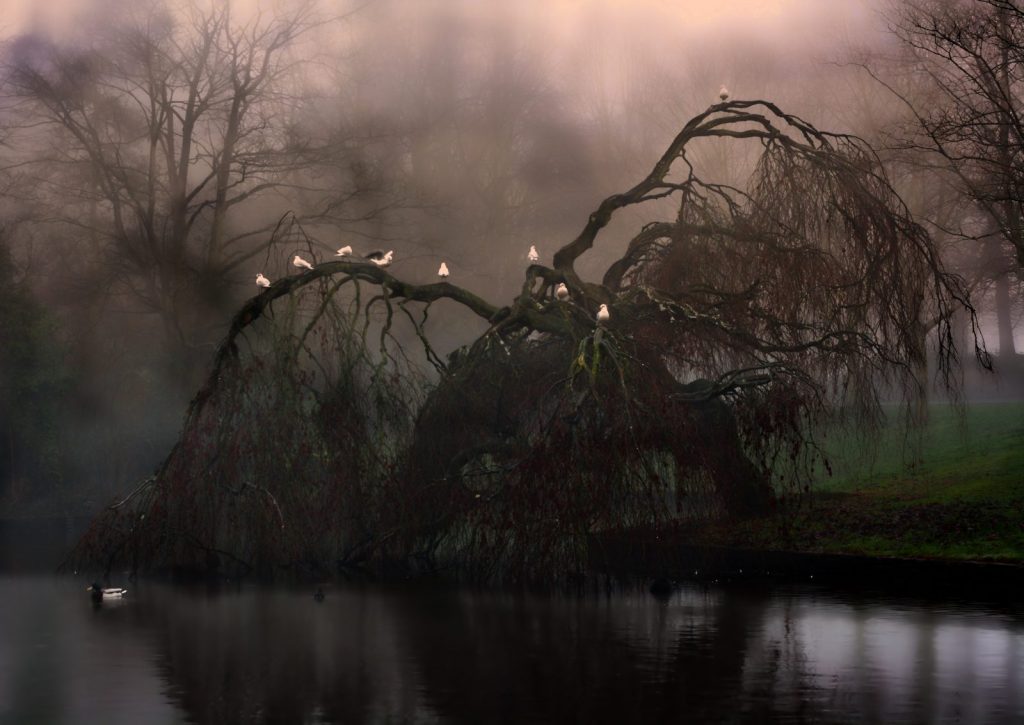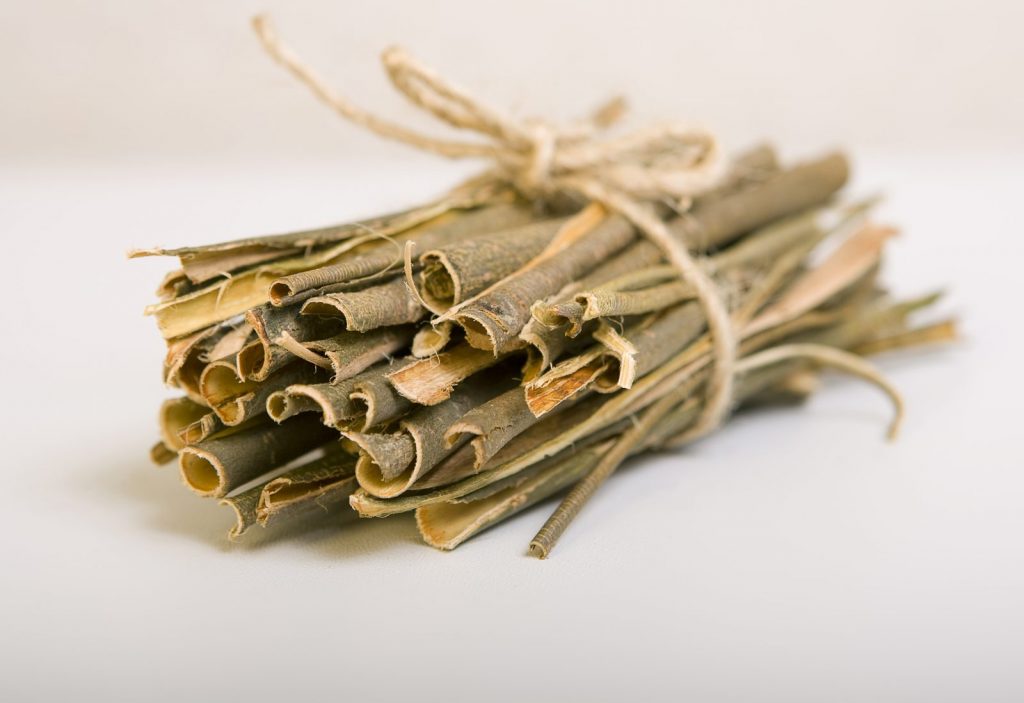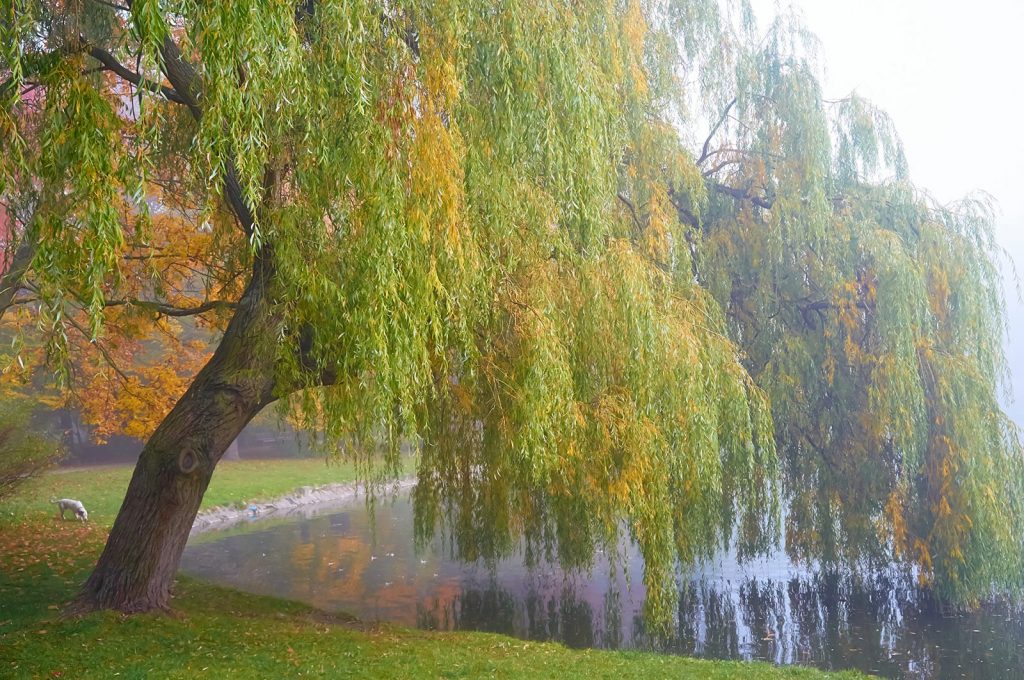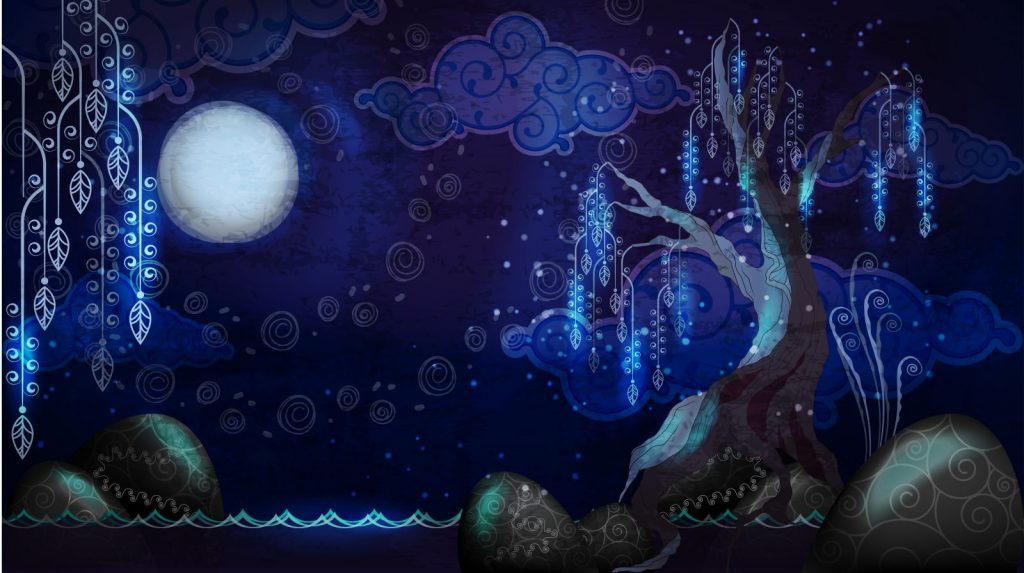I am WILLOW and my story is INTUITION. I stand on the riverbank with the moon on my shoulders, and the spirit world shimmering just beyond my pale shadow. I am the link between conscious and subconscious – between what is known and what is felt.
Come, sit in the circle of my folding branches and let yourself wail for those you’ve lost. Grief is the place where receptivity and reflection are born. From pain comes compassion, and from compassion comes a deep, rich, humble perspective that welcomes and integrates alternate experiences.
I ask you now to listen beyond the words people say to hear the deeper yearnings of their hearts. I ask you now to embody the shifting powers of the moon and sense the changing tide of events. I ask you now to interpret your dream symbols and give voice to inner whispers. This moment wants more than purpose or logic. It demands your sacred feminine. It demands the raw edge of your feeling truth.
I offer too a warning. Without the proper tether, openness leads from the firm bank into churning waters. Impression becomes illusion. The current pulls towards chaos, and other’s fears, projections, and turmoil might become your own. Know that you must feel anchored and secure to remain for long in subconscious eddies. Without caution you may find yourself lost, disconnected and confused, unable to see the shore. If you mistakenly wade beyond your depth, or if life’s circumstances pitch you towards rough water, swim for the riverbank with all your heart. Leave my watery margins and walk away from the moon. Seek instead the sunny oak, where you might ground your mind in reason and hope. Latter, you can return to me ready for my challenges.
About Willow
The iconic willows of myth and legend are beautiful trees that grow close to riverbanks and fresh water springs. Salix alba, or white willow, is native to Europe and Asia, named for the pale tone on the underside of it’s leaves. The white willow has long, slender branches that fall gracefully towards the ground in an attitude suggesting the bent body of one grieving.

From the earliest times, willow is a tree of the moon, water, the spirit world, grief, and mourning. Willows show up in symbolism related to the powerful sorceress Circe and her cemetery of willow trees at Colchis. In the myths of Persephone, Ceres, Hecate, and Orpheus they grow in the underworld and signify a traveler has ventured too far from the land of the living. Shakespeare, in Hamlet, uses willow iconography when describing the place of Ophelia’s suicide. He writes, “There is a willow grows ascant the brook, that shows his hoar leaves in the grassy stream.” Modern society preserves this history with gravestones carved with willow branches as an emblem of remembrance.
In Celtic mythology, willow is the fifth tree of the Ogam alphabet Ogam is an enchanted tree oracle and ancient script of 20 symbols named for forest trees. The Celts viewed willow as a tree of deep receptivity, intuition, and attunement to lunar and female rhythms and cycles. Willow asks the searcher to feel their way forward and place pragmatism aside. Grief is an ally in this process, as sorrow opens the heart and consciousness to felt experience, making one more sensitive to their own and other’s feelings and perceptions.
Willow represents the shimmering otherworld associated in the Celtic imagination with liminal spaces such as the edges of rivers where souls might find themselves suddenly in the land of Fairies. The willow characterizes the expansion of the imagination into other dimensions or into one’s future. In its shadow aspect, willow warns of traveling too far in subconscious realms or being too sensitive to other’s emotional turbulence and so becoming overwhelmed, confused, and lost. Intuition, we learn, can be dangerous, if we don’t anchor ourselves often enough with reality.
In France, willow is associated with bewitchment; or rather love of an illusionary nature. In the Medieval moonlight, maidens place willow wands on the earth and run round them three times to see a likeness of their future husbands emerge. To dream of a willow is a prophesy of losing one’s lover to another. Those suffering from unrequited love or lost love are advised to weep out the night beneath the willow’s protective crown.
The leaves and bark sap of willow have been mentioned in ancient texts from Assyria, Sumer, and Egypt as a cure for pain and fever and were also used widely by Native American tribes. In the 1700s, a tincture made from soaking willow bark (shown below) in alcohol produced a treatment widely used to combat malarial fever, and in the early 1800’s, salicin was isolated as the active, medicinal component of the bark. Salicin acts as an anti-inflammatory and analgesic agent in the human body and is the historical origin of aspirin.

A Willow Tree Practice for Intuition
In this practice, willow helps us connect with the inner world of our deep, intuitive knowing to explore hidden influences through visual journaling. Visual journaling is a method used by art therapists to tap submerged thoughts and feelings that live just below the surface of our consciousness. While non-artists often feel intimidated by drawing or painting, capturing the soul’s symbols inspires a deeper relationship to self and more trust for intuitive promptings.
1. Prepare
Remove yourself from distractions by turning off your phone and finding a quiet place where you will not be disturbed and can easily write and draw. You will need blank pieces of paper and crayons, colored pencils, chalk, or colored pens. Large size drawing paper works well, but any paper and even a ballpoint pen are fine. If you wish, light candles to give your space a magical glow, and make yourself a cup of tea.
2. Set Your Intention
You can set any intention you like but if you need a start try this: “My intention is to sit in the presence of the willow tree and listen to the currents running beneath the surface of my conscious mind. I will trust the images that emerge in my mind’s eye and capture them as best I can on paper. I will let these symbols from my unconscious give me insights to support my understanding of myself, my life, or a situation that’s causing me confusion.”
3. Sit Beneath A Willow in Your Mind
Close your eyes and take long slow inhalations and exhalations. Feel yourself coming to a grounded, quiet center point. Take as long as you need to relax into your body, mind, emotions, and spirit. Visualize yourself walking across a twilight meadow, a full moon overhead, and a lovely willow tree before you, situated on the bank of a slow moving stream. Sit down under the folding branches near the trunk, facing the water’s edge. Breathe in the soft, steaming aroma of bark and dirt and water and leaves. See yourself fully there, letting your imagination enrich the scene in any way that feels right. If you wish, imagine protective animals or spirits inhabiting the branches of the tree.
4. Call Your Intuition Forward
When you feel ready, ask yourself, “What images want to come forward from my subconscious, from my deep felt knowing, from the waters flowing beneath the willow branches? What colors, shapes, forms, or symbols are present? What messages do the shadows wish to whisper, what insights want to come forward about the present moment or this situation?”
5. Honor Whatever Comes
It’s likely that something will appear in your mind’s eye, or that you’ll be transported to a particular time and place, or that you’ll notice sensations start to build in your body. It is common to get a blank wall, or emptiness at first. If this happens, honor it and don’t try to force your way through it. Look at the blank, explore the blank, and listen to the blank. When you are ready, something will come forward and the blank will start to shift. You might also notice that sensations are present in body tissues. You might feel tightness, resistance, or pain. You might feel like you are floating, or breathless, or excited, or fearful. Welcome any feelings as your subconscious communicating important information. Express curiosity and attention. Ask your body sensations to share their needs, wants, warnings, or invitations.
6. Capture the Subconscious
At a certain point you will feel ready to draw or write something. Don’t edit yourself or worry about the quality of your drawing or writing. Just do your best to draw what you see in your mind. Add words or phrases if they are present. Work quickly; don’t get bogged down in trying to perfect one thing. Draw and write without stopping until you feel done.
7. Contemplate
When you have finished your drawing, walk away. Get yourself a fresh cup of tea or use the restroom. After 15 minutes, come back and look at your drawing from a distance. Now, look at it closely. In the margins of the drawings, or on the back of the paper, capture your impressions. If you need a start, try using these questions as a guide for self-inquiry:
- How do you feel when you look at the drawings?
- Which image or symbol stands out? What does it mean to you?
- Based on the drawings, what does your deep subconscious mind and heart want you to pay attention to from the past, from the present, from the future, or from this situation?
- Is there anything about the drawings that bothers you? What does the sensation of feeling bothered want to communicate to you?
- Do any of the drawings come from a specific part of yourself that has gone unnoticed in some way? What might this part of yourself need? What insights have you gained into yourself, your life, or a particular situation through this exercise?
8. Integrate the Experience
Imagine yourself again, sitting under the branches of a willow tree, the moonlight filtered through the pale leaves and the sound of the slow stream, gurgling as it makes it’s way down the enchanted valley. Let what you’ve learned fully take root in your being and thank your deep self for sharing its wisdom, images, and symbols. Share your drawings with a trusted friend or partner if it feels right.
A Regular Practice
If connecting more deeply with your subconscious self or intuition is right for you, undertake this practice regularly to exercise this important spiritual “muscle”. Keep your drawings in a notebook or portfolio and return to them often for new insights.


